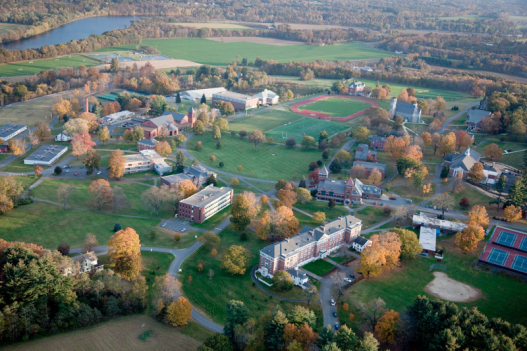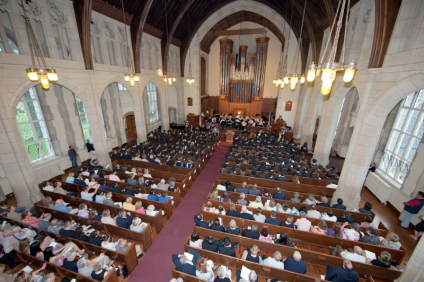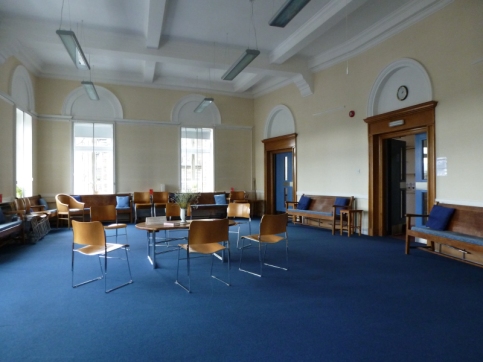At Northfield Mount Hermon, the New England boarding school where I teach, we often begin all-school meetings with a few words of reflection or provocation and then a minute of silence to sit with what we’ve heard. At the beginning of each academic year, when the community re-forms anew, we sometimes decide to open the quiet by talking about silence itself. What follows here is an introduction I delivered early last year.
People experience silence in many different ways.
For some, silence is a punishment or an isolation. It’s an indication that we’ve done something wrong or transgressed some boundary. We’re left alone without connection, without a voice. For others, it’s a danger or at least an unpleasantness. If we’re quiet, we’re more likely to notice our emotions—and sometimes that’s too much to bear. If silence suggests something negative, it’s no surprise that we’d try to avoid it or at least fill it: with conversation or music, with games or with gossip.
To others, though, silence offers a respite. It’s a refuge from clatter and sensory overload. It’s space for a Sabbath, the rest between notes that makes meaning of the melody. Or silence can offer renewal, a chance to return to the present moment. Taking just a few seconds of quiet stillness can clear our minds so we’re focused with full attention. We take a deeper breath, refresh with a lungful of good oxygen, and come back renewed to whatever task lies before us.

Silence can offer a larger-view perspective, like this view of the NMH campus.
…..
From nmhschool’s photostream on Flickr.
For many, silence offers the chance to connect with the soul’s guidance. Quakers understand that “That of God” rests within each individual. In that light, silence offers a time, place, and method for hearing an inner voice that’s so often drowned out by teachers, by peers, by family. Silence is where we know ourselves most deeply.
Whatever our experience, we can acknowledge that something shifts when we choose to share stillness—as Quakers do in worship or as we do here in all-school meetings. It’s a time when we cultivate a collective purpose or a shared intelligence that’s impossible when we’re alone.
I sometimes wonder when we’re quiet here if we’re all experiencing separate silences, as if there were a thousand thought bubbles, each filled with the concerns and excitements of our day. I also wonder what it would be like to consciously focus our silence together around one larger hub that could fill a chapel or as if each of us sent out a spoke toward the center of the room, forming one larger hoop or wheel.
In some cases, we enter silence with a common thought or prayer, but in others the silence becomes a question or an offering in itself. We simply choose to share our quiet—and then wait on our collective intelligence. We listen together for that still, small voice that moves among and between us. The one that moves through us as a group. An answer might come here and now; it might come weeks later. But we plant the seed. We offer an invitation. We create space for the creativity.
In that spirit, then, I ask you to take this minute—and it will be a full minute—to enjoy and commit to our shared silence and stillness. What qualities do we nurture in ourselves and in this place by choosing to be quiet…together? Let us be silent.


